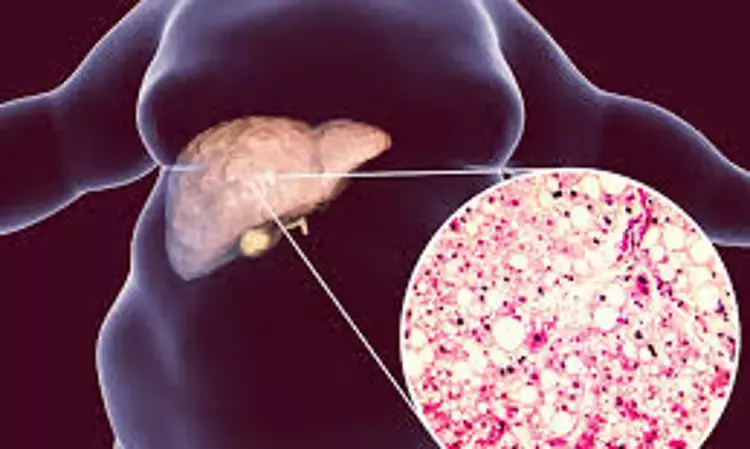- Home
- Medical news & Guidelines
- Anesthesiology
- Cardiology and CTVS
- Critical Care
- Dentistry
- Dermatology
- Diabetes and Endocrinology
- ENT
- Gastroenterology
- Medicine
- Nephrology
- Neurology
- Obstretics-Gynaecology
- Oncology
- Ophthalmology
- Orthopaedics
- Pediatrics-Neonatology
- Psychiatry
- Pulmonology
- Radiology
- Surgery
- Urology
- Laboratory Medicine
- Diet
- Nursing
- Paramedical
- Physiotherapy
- Health news
- Fact Check
- Bone Health Fact Check
- Brain Health Fact Check
- Cancer Related Fact Check
- Child Care Fact Check
- Dental and oral health fact check
- Diabetes and metabolic health fact check
- Diet and Nutrition Fact Check
- Eye and ENT Care Fact Check
- Fitness fact check
- Gut health fact check
- Heart health fact check
- Kidney health fact check
- Medical education fact check
- Men's health fact check
- Respiratory fact check
- Skin and hair care fact check
- Vaccine and Immunization fact check
- Women's health fact check
- AYUSH
- State News
- Andaman and Nicobar Islands
- Andhra Pradesh
- Arunachal Pradesh
- Assam
- Bihar
- Chandigarh
- Chattisgarh
- Dadra and Nagar Haveli
- Daman and Diu
- Delhi
- Goa
- Gujarat
- Haryana
- Himachal Pradesh
- Jammu & Kashmir
- Jharkhand
- Karnataka
- Kerala
- Ladakh
- Lakshadweep
- Madhya Pradesh
- Maharashtra
- Manipur
- Meghalaya
- Mizoram
- Nagaland
- Odisha
- Puducherry
- Punjab
- Rajasthan
- Sikkim
- Tamil Nadu
- Telangana
- Tripura
- Uttar Pradesh
- Uttrakhand
- West Bengal
- Medical Education
- Industry
Cumulative BMI can help Forecast NAFLD Risk

Cumulative BMI is effective in forecasting non-alcoholic fatty liver disease risk according to a recent study published in Liver International.
A study was conducted to evaluate the association between cumulative body mass index (BMI) and long-term BMI change with non-alcoholic fatty liver disease (NAFLD).
The researchers included 19 477 adult participants (12 556 men and 6 921 women) from the Kailuan study from Jan. 2006 to Dec. 2013. Cumulative BMI was assessed using a quadratic mixed-effects method by sex before the index year; then, the NAFLD outcome was followed till Dec. 2019. The long-term BMI change was calculated as the percentage change in average cumulative BMI from the baseline BMI.
The Results of the study are:
- During a median follow-up of 5.63 years, 6 229 individuals developed incident NAFLD.
- Independent of baseline BMI, the NAFLD risk escalated with the cumulative BMI with adjusted hazard ratios (HRs) for the intermediate tertile and the highest tertile (P trend < 0.001).
- The association is amplified in women and the young.
- Compared to a stable weight (BMI change: -3% to 3%), NAFLD risk increased in the baseline BMI < 24 kg/m2 group with weight gain (BMI change: > 3%) and decreased in BMI ≥ 24 kg/m2 group with weight loss (BMI change: < -3%) for men and women.
- However, we only observed a decreased NAFLD risk in men (HR: 0.82, 95% CI: 0.69-0.97) with BMI < 24 kg/m2 and weight loss.
Thus, monitoring cumulative BMI may help to identify high-risk NAFLD populations. The association between weight gain or loss varies by sex and baseline BMI, suggesting the importance of individualized weight management for NAFLD prevention.
Reference:
Feng, B., Chen, S., Wang, X., Hu, S., Zhang, X., Zhang, J., Wu, S. and Wang, L. (2022), Effect of cumulative body mass index exposure and long-term related change on incident non-alcoholic fatty liver disease. Liver Int. Accepted Author Manuscript. https://doi.org/10.1111/liv.15436
Dr. Shravani Dali has completed her BDS from Pravara institute of medical sciences, loni. Following which she extensively worked in the healthcare sector for 2+ years. She has been actively involved in writing blogs in field of health and wellness. Currently she is pursuing her Masters of public health-health administration from Tata institute of social sciences. She can be contacted at editorial@medicaldialogues.in.
Dr Kamal Kant Kohli-MBBS, DTCD- a chest specialist with more than 30 years of practice and a flair for writing clinical articles, Dr Kamal Kant Kohli joined Medical Dialogues as a Chief Editor of Medical News. Besides writing articles, as an editor, he proofreads and verifies all the medical content published on Medical Dialogues including those coming from journals, studies,medical conferences,guidelines etc. Email: drkohli@medicaldialogues.in. Contact no. 011-43720751


